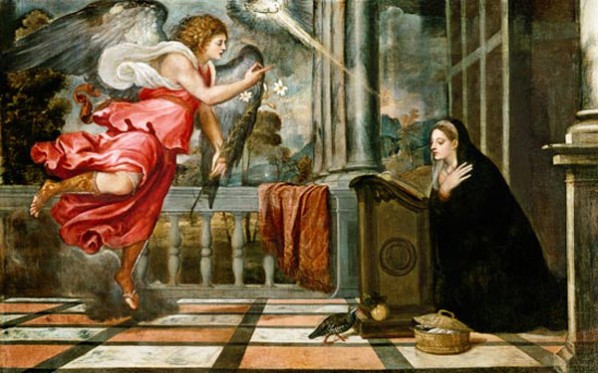
Titian, Annunciation, c.1540, 403 × 236 cm
by Siran Changchang
The Spirit of Historical Painting
During his stay in Venice, Richter saw a religious painting "Annunciation"(1540, The church of San Salvador in Venice) by Titian, he was very fond of this great painting, he even wanted to own it. To a considerable extent, to compensate for the desire which could not be achieved , in 1973, he drew five oil paintings named "Imitation of Titian's Annunciation" . These paintings are the only clear reference to others' works and the only ones referring to Christian images. These two paintings are based on materials of postcards and other printed items, they also come from copies of photographic work, however, the purposes are different : Richter would like to retrieve the unique and perfect representation created by the masters in art history through photographic prints, though nothing to do with the photographic representation process.
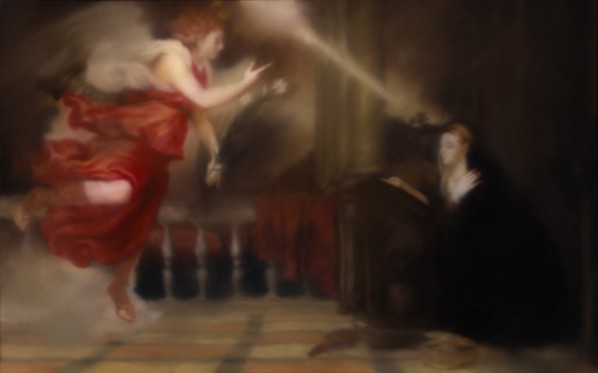
Gerhard Richter, Annunciation after Titian No.1
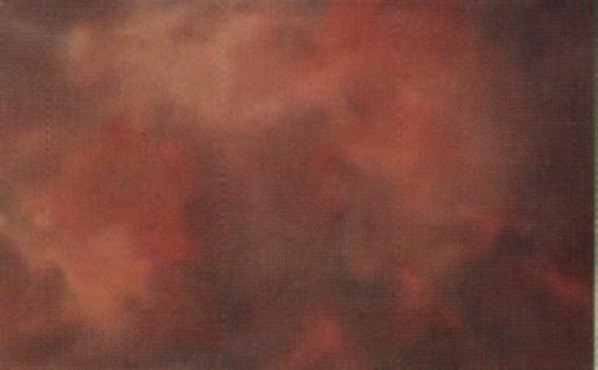
Gerhard Richter, Annunciation after Titian No.2
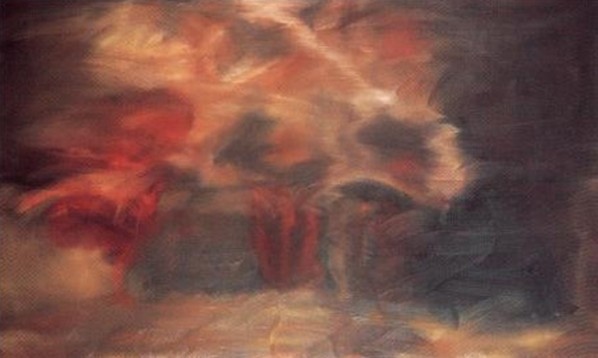
Gerhard Richter, Annunciation after Titian No.3
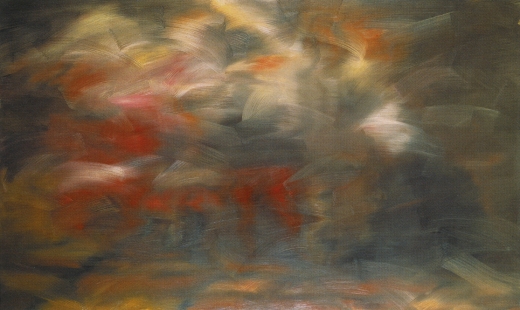
Gerhard Richter, Annunciation after Titian No.4
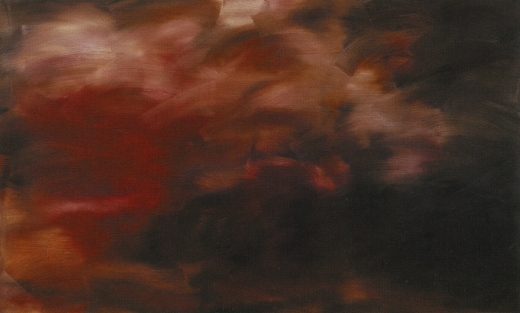
Gerhard Richter, Annunciation after Titian No.5
Buildings and characters in the first one are handled rather vaguely, but they can still be identified and the original bright colors have turned into black and gray tones. Richter saw Titian through "a piece of black glass" which was both a symbol of Stoll's so-called contemporary artists that no longer had the spirit of inspiration and worshiping but unable to recreate the representative style of the oil paintings of that era. From the second, the original image in the painting is wiped out by wide brush strokes and completely unrecognizable. This is not a slander or negative attack on Titian, Richter wished to grasp certain exciting artistic qualities through the imitation of Titian, but ultimately, he believed he failed. What cannot be represented is not Titian's technique, but the "flavor of that era, a kind of potential beauty and delicate things"- unable to represent the time. In Scruton's core meaning of representational art, this is exactly one part of the conscious link between paintings and painted objects which belong to culture, ideology and history. So in Richter's paintings, imitation of the way of representation eventually becomes the debris of light and color beyond representation of Titian's spirit .
Richter failed to seize the spirit of the painting's representation of different periods through religious painting, but this issue has always been difficult for him to let go off. He once said, "It is the classical spirit that supports me and gives me form". Classical spirit, since its birth, has directed the issues concerning survival, classical paintings have always regarded the representation of the human as the highest form, especially after the Renaissance, historical painting gradually became the mainstream of painting. With the rise of modernist art, historical painting was virtually disappeared, news photographs became the authority of the new era for recording historical events. After World War II, many artists turned from forms foremost to reflecting reality, using painting to represent news photographs became a typical way, Andy Warhol may be the most famous representative of this art.

Gerhard Richter, Dead No.1 1988 62x67cm
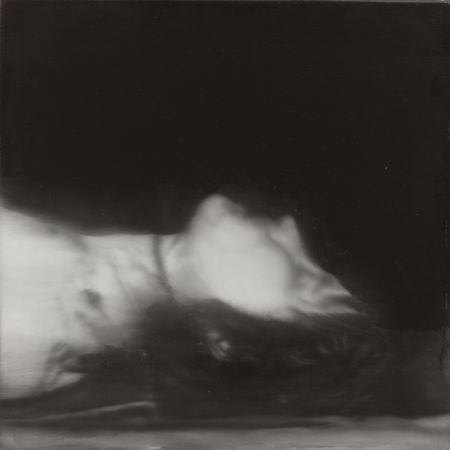
Gerhard Richter, Dead No.2 1988 62x62cm
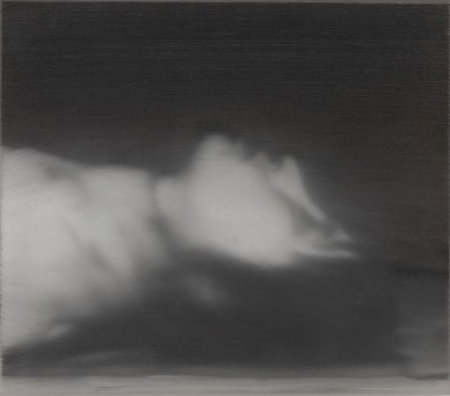
Gerhard Richter, Dead No.3 1988 35x40cm
Richter's most important works in 1988" October 18, 1977"group picture were based on the news photographs that several core members of the Baader-Meinhof organization-the West German branch of the "Red Brigades"-died in prison. Photographs showing the shooting of a man's death that prompts a double death: first is the loss of life and then sentencing the disappearing life into history. Facing death resulting from naive political ideals, Richter's composition was in strict accordance with the then published news photographs and then omitted some real but specific details in images of an individual's death and then softens the margin of characters to make it difficult to distinguish them from the background, finally, wiped across the wet canvas with painted gray pigment using a brush to create an effect of stifling cold and fuzzy. Obviously, he didn't want to print out the miserable situation of the deceased as mercilessly as the photographs did, nor represent grief. Paintings" Dead No.1, 2, 3 "depict the scene of Meinhof's corpse lying flat on the ground, the composition of the three paintings are almost exactly all the same, but the sizes are decreasing and becoming vaguer and vaguer one by one. It may be said that it appeases the enormous pain and fear of the living brought by death, also we can say that this dispels the noble sense of the ardent youth's death and the significance of martyrdom.
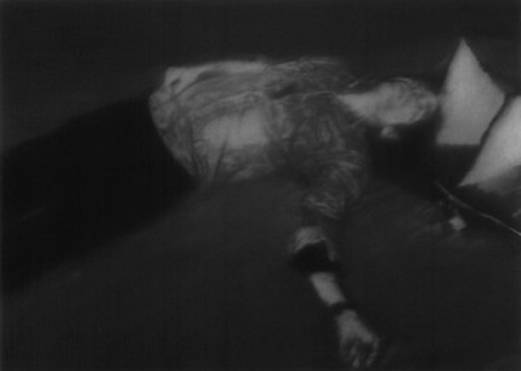
Gerhard Richter,Man Shoot Down 1, 100.5x140.5cm
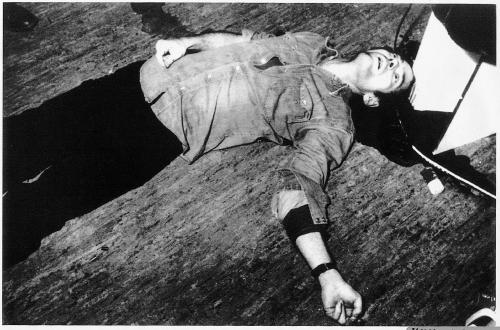
News Photograph Prototype of Man Shoot Down
Richter's "Man Shoot Down1" has almost no background, as if the death of the sitter (that is, Bud, one of the two named people of the organization)was caused by himself: could terrorist incidents really improve the political environment? Is bloody revolution really the best way to solve social problems? Courbet claimed that his "Burial at Ornans" depicts an ordinary burial by showing grand scenes like wars which is used to be traditional in historical painting. Death is the same for everyone, whether you die to honor the motherland or die in obscurity in an hometown, everyone that dies is equal. In 1977, although many people spontaneously came to attend the funeral procession to pay tribute to the sacrifices of these individuals, Richter confused the sensational painted scenes just like the crowd gradually melting into the misty rain: with the loss of life, all things lose their meaning, everything is over.
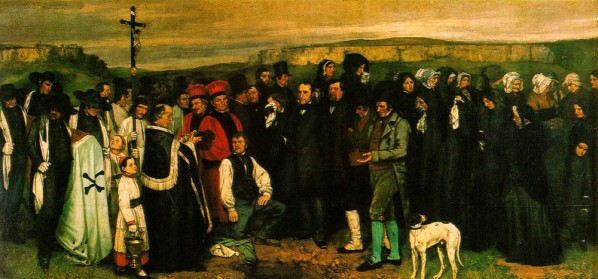
Gustave Courbet, Burial at Ornans, 314x663cm
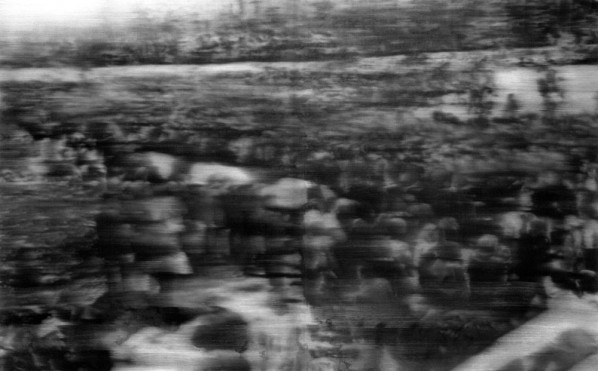
Gerhard Richter, Funeral(Beerdiggung), 200x320cm
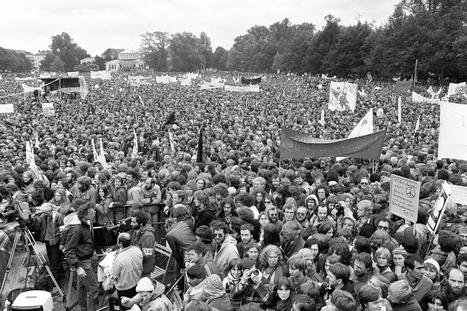
News Photograph Prototype of Funeral(Beerdiggung)
When this group of paintings were first displayed in Kleinfeld from February to April ,1989, they caused a shock in the late-Cold War German territory and soon spread out all over the world. Bloch called "a representation of the current public history", however, what an oppressive representation it is, for these young people who paid with their lives, Richter neither criticizes nor praises. Ten years has passed after the incident, he suddenly regained this topic ,whether the calm composition or the alienating sense of the painting's effect forced us to ask what is the cause of this tragedy? Their lives in exchange for what? Perhaps these troubled and unavoidable questions in any period is exactly the spirit of historical painting that Richter has sought, which are also the unique value of the representation of painting. Richter's so-called painting in the way of photographic representation still has positive implications in the works he actually completed because a conscious choice of denying or silence itself is an expression of attitudes and opinions.
Summary
Richter's borrowing of photography seems an initiative that imitates its representational way, but in reality is insistence of painting's spiritual values. His repeatedly emphasized neutrality or "no style" in his works, both stem from the stimulation caused by the situation of his generation and features resulted in German national history, but also his own way of thinking and his concerns . Danto pointed out keenly that the first generation of artists after the Nazis tried to keep German characteristics while also re-connecting with modernism. In addition, they have to deal with the harsh Cold War which divided their Motherland into two likes a fatal wound, which is a thorough political division. Richter is the product of all these situations, but just like Andy Warhol -with whom he is similar in many ways - he developed a grim sense of self-protection, so that he and the audience seem to be able to experience the reality of history beyond a distance.
Richter's works have repeatedly prompted the eternal human issues that face this era. History is always ambiguous; to represent it in a vague way would be more credible. Shao Yiyang believes that the problems raised by Richter do not only belong to his time and nation but also belong to everyone. The fuzzy sense made by the artist informs us that everything on the screen is about memory which has gone with history, but there still exists a kind of worry, a sense of fear which haunts the picture and also the audience. It is exactly the problems he raised which have transcended time and space that makes his art pass through cultural barriers, to be recognized more widely and brings about a broader artistic appeal.
While concerned with history Richter also paid attention to art history. His most important question in painting is not so much an imitation of photography as how painting represents historical reality in the era of daily visual ways that are gradually dominated by photography. He has successfully achieved a unique visual conversion, a possibility of a painting's representational way and taken the initiative to continue to write on Western painting history.
The End
The views expressed in this column are the author’s own and do not represent those of CAFA ART INFO.
About the Author
Ms. Siran Changchang, Master of Arts on Cross-Cultural Art Studies at Central Academy of Fine Arts (Sep. 2008 to Jul. 2012)
Cell: 0086-13701175871, Tel: 0086-25-83562731 E-mail: shirangchanchan@hotmail.com
PUBLICATION
Siran Changchang, “Between Images and Texts: Second-handed Material and Imaginary China”, Art Observation ( National Core Periodical ), July 2009, p121-125
Siran Changchang, “The History Returns to Painting Through Photography”, Oriental Art – Master, vol. 207, June 2010, p124-129
Siran Changchang, “Escaping Into Life: Analyzing the significance of images in Chen Wenji’s Oil Paintings of the early 1990s”, Chen Wenji’s Retrospective Album, 2010
Translated by Siran Changchang, “We Are the Landscape: A Conversation with Steven Siegel by John K. Grande”, World Art ( National Core Periodical ), 2010/3, p29-32,
Translated by Siran Changchang, “Cui Guotai: Rust Never Sleeps”, by Patricia Eichenbaum Karetzky,Oriental Art – Master, vol. 187, August 2009, p145-153
EXPERIENCE
Temporary Assistant Editor: Department of Academic Studies, National Art Museum of China, May 2008
Temporary Gallery Assistant: Universal Studios Beijing (now renamed as Boers-li Gallery), April–May 2006
Reporter & Editor: Hong Art Magazine, Beijing, February—April 2008
Translator of English Papers & Reports for Magazines: Art Value, Oriental Art, Vision Magazine, Contemporary Art, etc. 2007-2010.




























